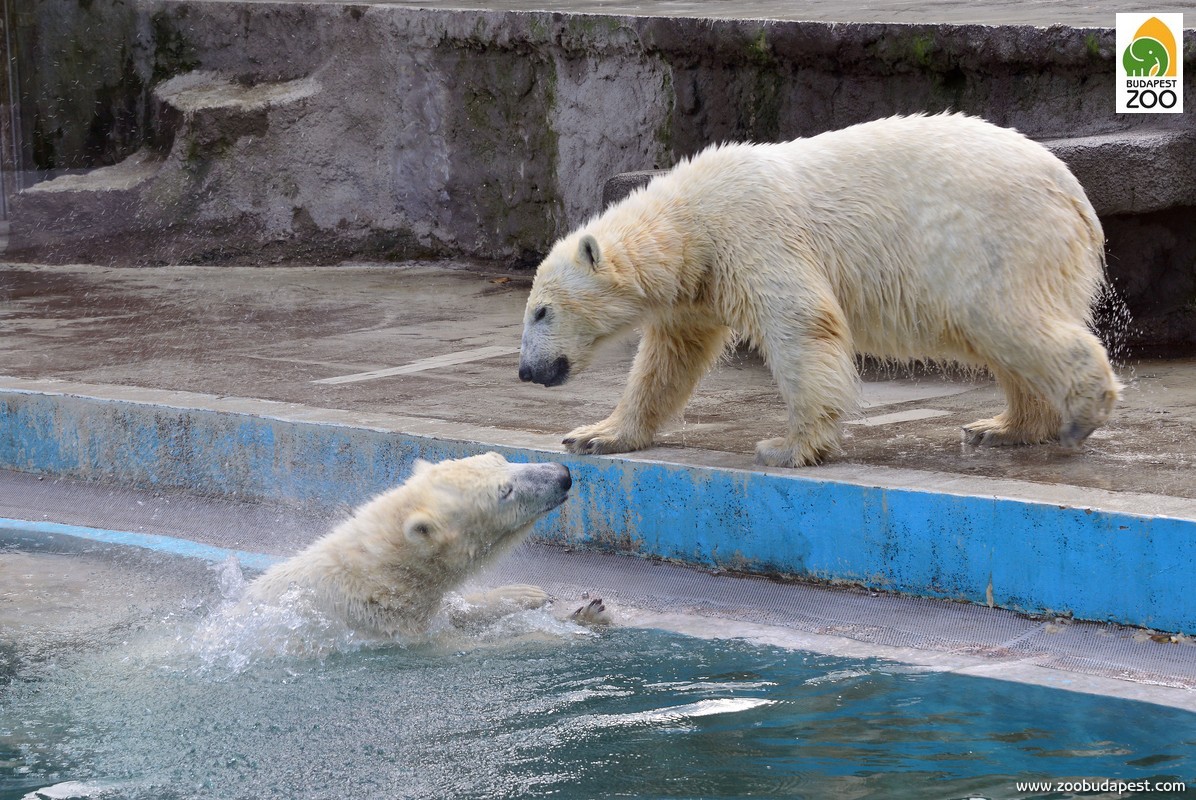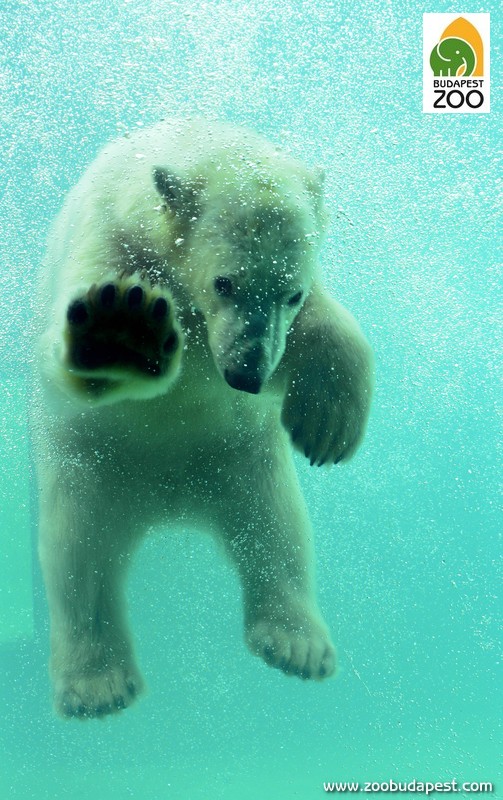Get to know our new polar bears March 24, 2017

Our newcomer polar bears are siblings from the same litter; both are male, and were born in the Moscow Zoo on 28 November 2015.They flew in from there. Being less than a year and a half old, they are considered to be very young animals: although they can hardly be called cubs, they will keep growing for years; they will reach sexual maturity at the age of 5, and breeding maturity at the age of 7 or 8.
Get to know the new polar bears!
In the Russian capital they were given the names Belij (Белый = White) and Serij (Серый = Grey) and we will keep using these names. The names are only partly right, because it is true that polar bears’ coat is yellowish-white, and can take a greyish shade if it becomes dirty while playing, but the status of which of the two is whiter at the moment is not a steady one.

As it is known, in 2006 the Zoo modernised the polar bear enclosure, which was built back in 1912. The floorspace of the enclosure was tripled and, instead of the old 18 m3 paddling pool, a 350 m3 swimming pool has been constructed (the old pool was filled with soil, providing animals with an opportunity to dig). The design of the pool allows the public to see the polar bears underwater, through a 55 mm thick glass wall.
Belij and Serij were brought to Budapest in the framework of a coordinated polar bear breeding programme (EEP). Within this programme, it is not only important to maintain the appropriate breeding couples or trios, but the new supply of breeding specimens must also be ensured. And good male animals will be needed in the future for sustainable breed father management. Serij and Belij were too big to stay in Moscow any longer but it is another four to five years until they can be considered as breeding fathers.
It is therefore a great help for the breeding programme that our zoo is capable of accommodating these animals. What is more, timing is rather lucky in terms of the zoo development because, under our mid-term plans, further extension of the polar bear enclosure will be possible when these two animals reach the appropriate age for mating with the suitable female animals.
As part of the polar bear introduction on Tuesday, the Hungarian Ice Hockey Association officially adopted Belij. The relevant deed was handed over by the Director-General of the Zoo, and Éva Montskó, Chair of the Foundation for the Budapest Zoo, to dr. Zsuzsanna Kolbenheyer, the VP in charge of professional matters in the Hungarian Ice Hockey Association. As it is well known, the white-coated predator is the mascot of both the Association and DVTK Polar Bear Teams.